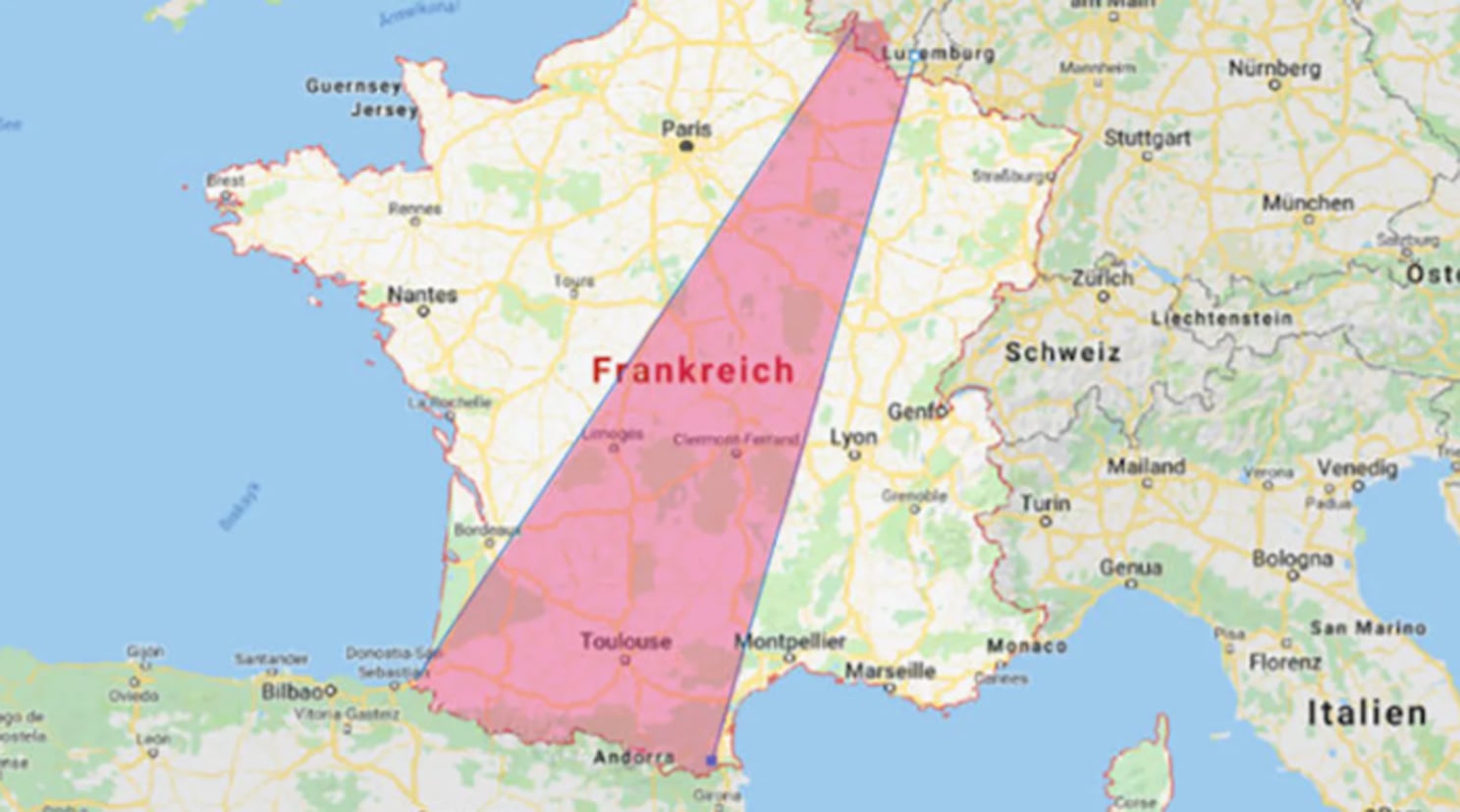France has a population of nearly 68 million people and is the 7th largest economy in the world, after the US, China, Japan, Germany, the UK and India. France is known as the "hexagonal country" because of its 6-sided surface area.
However, few people expect that nearly 1/3 of the country's area is almost uninhabited. That land is almost located in the central area, which is thousands of kilometers long and approximately 400 kilometers wide. Nearly 1/3 of France's area has an extremely sparse population density. Statistics show that the population density in this area is 30 people/km 2 , compared to the average density in the whole of France of 120 people/km 2 . Meanwhile, Paris has the highest density: 20,386 people/km 2 . Compared to neighboring Germany, the average population density is up to 232 people/km 2 .

The “empty diagonal” that divides France
There are no dunes in France's "Le Diagonal du Vide", or "empty diagonal", but the area is so deserted that it has been compared to a real desert. The diagonal cuts across France, from the Meuse department, on the Belgian border in the northeast, to the Landes department in the southwest, near the Spanish border.
Paris - the heart of France absorbs all human resources
The French countryside began to thin out around the mid-19th century due to industrialization, urbanization, and low birth rates. These phenomena happened in France earlier than in most other European countries. Why? It all comes down to one word: Paris!
For centuries, this city on the Seine has attracted talent, capital and people like no other European capital, to the detriment of the rest of France.
That is also the main idea of Paris et Le Désert Français ( Paris and the French Desert ) published in 1947 - a typical work of geographer Jean-François Gravier. He sought to answer the appeal of the city of Paris. To keep both friends and enemies close, King Louis XIV was always conscious of attracting ambitious elites from all over the country to his lavish residence in Versailles, west of Paris.
They flocked to Paris like bees to honey. And they kept coming, even after the French Revolution of 1789 succeeded in ridding the country of its monarchy. As radical supporters of the Enlightenment, the early revolutionaries enjoyed the hustle and bustle of modern Paris. From the time of Napoleon onwards, Paris became a place where French power and prestige were projected.
Political centralism led to economic centralization, making Paris one of the world's largest destinations for migrants, although initially mainly from France itself. In 1920, only 39% of Paris's residents were natives of the city. Half were immigrants from rural areas of France, while another 10% came from outside France.
Gravier is no fan of Paris. "Since 1850, the accumulation of Paris's population has not energized it, but has turned it into a 'monopolist', a consumer of the nation's quintessence," he says. With the capital's birth rate much lower than the rest of the country, Paris is "an urban monster, depriving France of three times its human capital each year through alcoholism."

Paris always attracts tourists from all over the world.
The term “empty diagonal” became popular in the 1990s, as a more accurate successor to Gravier’s “French desert”. Although the “empty diagonal” still contains some potential growth centres, notably cities such as Toulouse or Clermont-Ferrand, the general trend is one of population decline. Some regions have more deaths than births, while others have more people leaving than arriving. And some have both.
Once bustling with industrial growth, entire regions of northeastern France now lie empty. Factory closures over the past half-century have decimated industry, fuelling unemployment and poverty, and spurring migration abroad. And it’s not just northern industry that’s been on the wane: over the past 40 years, the number of French people employed in agriculture has fallen from 1.6 million to 400,000.
The effect being felt in towns and villages across the “empty diagonal” is exponential population decline. As populations age and shrink, communities lose services such as schools, cafes, bakeries and shops – which in turn accelerates the decline.
The "Empty Diagonal" is not the only rural area in France that has seen population decline. Other empty areas outside the "diagonal" include locations near the Alps in the southeast and the Pyrenees in the south.
Source link




















































![[Maritime News] More than 80% of global container shipping capacity is in the hands of MSC and major shipping alliances](https://vphoto.vietnam.vn/thumb/402x226/vietnam/resource/IMAGE/2025/7/16/6b4d586c984b4cbf8c5680352b9eaeb0)













































Comment (0)